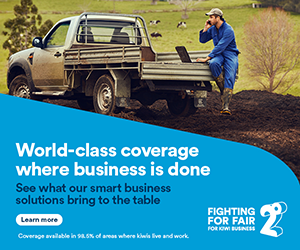The recruitment landscape is changing, and challenges we have faced in the past year have expedited the current recruitment environment.
The employment market as I am experiencing it, could be compared a little to the current housing market – demand is high but stock is limited. This makes for challenging times and an employee-centric market.
One of my mantras when advising my clients, is that time is one of the most critical parts of your process – having the ability to make both swift and timely decisions, but also having the time to give your recruitment process justice, without rushing, cutting corners and making costly mistakes.
More than ever before the cost of employing staff is rising, and we all know that the right staff in your organisation are your biggest asset. Using well informed information and processes to help decide which candidates will add the most value to your business – which is ultimately the most important thing that staff should do for you – is critical.
The beginning …
Attracting the right candidate is the critical first step. A well-worded advert will mean you have fewer “unsuitable” candidates wasting your time with applications for a role that they were never qualified or experienced enough for. The recruitment process starts at the very beginning with a well-worded and written advert – published in the right medium for your industry.
The process …
Advert placed applications are rolling in. However, the more applications you receive doesn’t automatically equate to making your recruitment process easier. It actually creates more work for the employer as you have to deal with more candidates, more often than not with an overall lower skill set. On average, 80 percent of your candidates will be unsuitable.
I hear many complaints from candidates that they submit applications to businesses and then never get a reply. Remember, a simple acknowledgement email shows courtesy and maintains your employer brand.
Know what you want …
Do you have a checklist that is based on the key skills and experience required for the role? Is it based on the job description you have developed for your vacancy? Do you have a job description for your vacancy? Many employers do not.
How can an employee decide if your role is suitable if you don’t provide a description of what the role involves? How do you what you want them to achieve if you have not written it down? How can you performance-manage an employees’ non performance if you have nothing that states your expectations. It’s a simple document, but it can be a costly omission.
Comparing apples with apples …
Shortlists should be made up of the best candidates who have the skills and experience that match the requirements of your role and position description. Your time is precious so you should only spend your time interviewing candidates who meet your criteria.
Interviews are important and should follow a similar process for each candidate. I advise specifically constructed questions that align with the requirements of the role. Compare apples with apples and interview each candidate on a level playing field. It will help to make your decision easier in the long run.
Do your research …
We recommend verbal contact with at least two prior employers or managers. Written and personal/character references are a thing of the past. You need to have the candidates permission (by law) to do this, and if they won’t give you the names of previous managers – ask why.
One of the biggest mistakes I see when employers do their own recruiting is not getting candidates to complete an application form. This can be a simple document asking applicants to declare criminal or pending criminal convictions, licence status, referees, medical status, etc and then they sign it. You then have a comeback if any of the details supplied are incorrect. Ensure you ask the right questions.
The fine print …
Checks and balances complete, you offer the role to your preferred candidate verbally. Your offer is followed up in writing along with your up to date employment agreement – which of course you have as it’s illegal not to. If you don’t have one or it needs updating then best you talk to us asap!
Don’t forget that the employment agreement needs to be signed prior to the start date, as the 90 day trial period (should you be using it) will be ruled invalid should the employment agreement be signed even an hour after work is commenced.
Inductions are important, how you start will set the scene for the future. It’s a good idea to set an induction plan for the first week of employment, covering a few key points each day.
During the first three months of employment I would encourage employers to meet with the employee monthly documenting performance and discussions. Especially if you think you may need to incite the 90 day trial period.


















